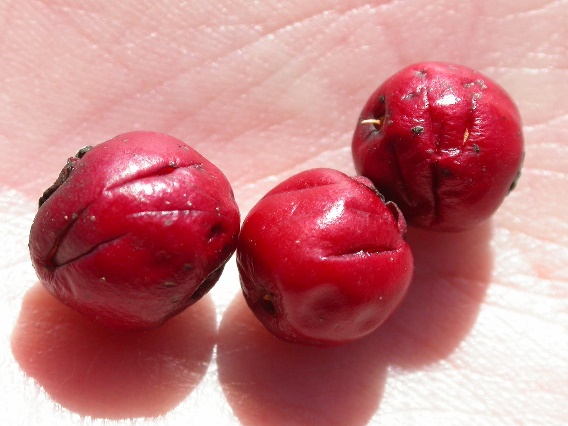Fruit colours attract animal seed dispersers, yet the causes of fruit colour diversity remain controversial. The lack of knowledge of large?scale spatial patterns in fruit colours has limited our ability to formulate and test alternative hypotheses to explain fruit colour, fruit size and fruit colour diversity. Spatial (especially latitudinal) variation in fruit colour, colour diversity and length has been described, and tested for correlations between fruit colour, length and plant habit, assembling a database of fruit traits for 13,178 fleshy fruited plant species spanning 136 sites around the world. Fruit length (both mean and variance) increases towards the tropics. Tropical communities tend to have diverse fruit colours, including many mammal?associated fruit colours (green, orange, brown and yellow), while high latitude communities contain a higher percentage of red?fruited species. The correlation between colour and size is strong, and some latitudinal patterns may be partly driven by changes in fruit size. Fruits may be larger in the tropics than at high latitudes because dispersers in the tropics tend to be larger, but there are other possible explanations. The Northern and Southern Hemispheres differ in the diversity of fruit colours across latitude, with the Southern Hemisphere having higher colour diversity, similar to the tropics. Differences in geography and in the history of plant lineages in the Southern versus the Northern Hemisphere may help to explain some biogeographic patterns, but alternative hypotheses related to fruit defence, development and metabolic costs are plausible. informacion[at]ebd.csic.es: Sinnott-Armstrong et al (2018) Global geographic patterns in the colours and sizes of animal-dispersed fruits. Glob. Ecol. Biogeography https://doi.org/10.1111/geb.12801
https://onlinelibrary.wiley.com/doi/full/10.1111/geb.12801

 Las altas temperaturas están provocando que las lagunas y las marismas de Doñana pierdan agua rápidamente
Las altas temperaturas están provocando que las lagunas y las marismas de Doñana pierdan agua rápidamente




